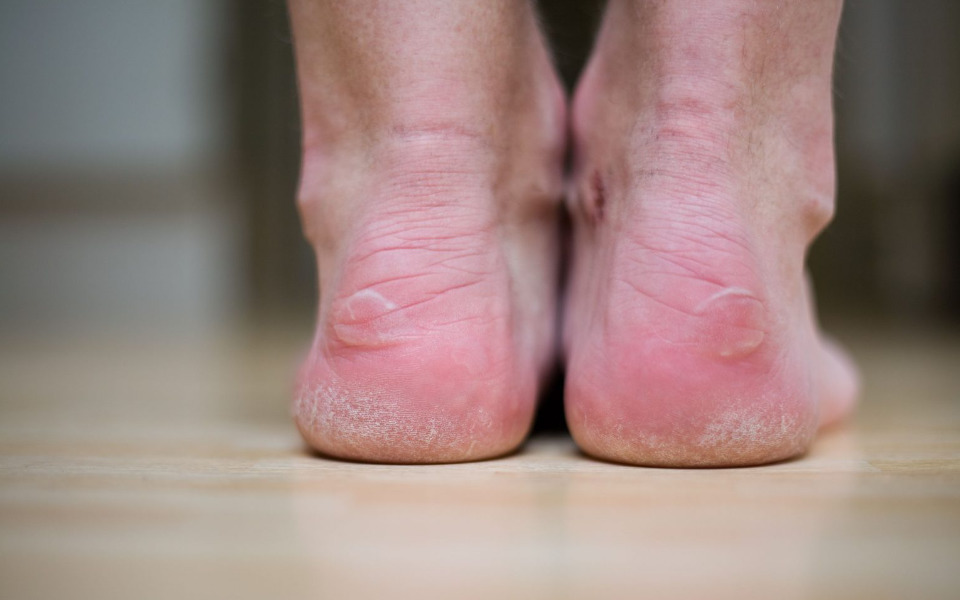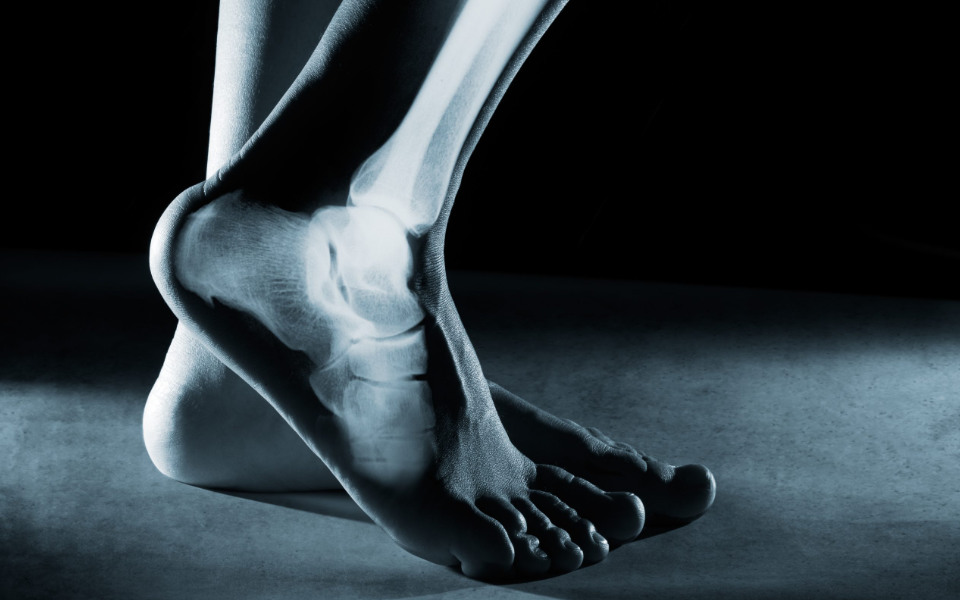Diabetes is a metabolic disorder distinguished by elevated blood glucose levels, affecting an estimated 537 million people worldwide as of 2021. This condition can lead to various long-term complications, impacting multiple organ systems throughout the body. Among these complications, foot-related issues are specifically major for people with diabetes.
The importance of foot health in diabetes management cannot be overstated. Diabetes can cause nerve damage (neuropathy) and reduced blood flow to the feet, making them more susceptible to injuries, infections, and slow-healing wounds. Even minor foot problems, if left untreated, can escalate into serious complications, potentially leading to ulcers, infections, and in severe cases, amputations.
Proper foot care is a crucial yet often overlooked aspect of diabetes management. Many people with diabetes may not realise the extent to which their condition affects their feet or the potential consequences of neglecting foot health. This lack of awareness can result in preventable complications that significantly impact quality of life and overall health.
This article looks into the critical relationship between diabetes and foot health, emphasising the importance of proactive care and regular monitoring. By providing comprehensive information on diabetic foot care, we aim to educate you about potential risks, preventive measures, and the role of podiatry in diabetes management. By increasing awareness and implementing proper foot care practices, people with diabetes can significantly reduce their risk of developing serious foot-related complications and maintain better overall health.
The Impact of Diabetes on Foot Health
1. Diabetes and Blood Sugar Regulation
Diabetes is a health condition characterised by the body’s inability to regulate blood glucose levels properly. This regulation is primarily managed by insulin, a hormone produced by the pancreas. In people with diabetes, the pancreas does not produce enough insulin (Type 1 diabetes) or the body becomes resistant to insulin’s effects (Type 2 diabetes). As a result, glucose accumulates in the bloodstream, leading to high blood sugar levels.
2. How Diabetes Affects Blood Circulation and Nerve Function
Prolonged high blood sugar levels can have detrimental effects on both blood circulation and nerve function:
- Nerve Damage (Peripheral Neuropathy): High blood sugar can damage the delicate nerve fibres, particularly in the extremities like the feet. This condition, known as peripheral neuropathy, results in a loss of sensation, making it difficult for people to detect injuries or pressure points on their feet [1]. Symptoms of neuropathy include tingling, numbness, burning sensations, and pain, which can worsen at night [2].
- Reduced Blood Flow (Peripheral Artery Disease): Diabetes can also lead to the hardening and narrowing of blood vessels, reducing blood flow to the feet. This impaired circulation slows down the healing process for cuts, sores, and wounds, increasing the risk of infections and ulcers [3]. Poor blood flow can cause symptoms such as pain or cramps in the legs during physical activity [4].
3. Common Foot Problems Associated with Diabetes
Diabetes significantly increases the risk of several foot problems, primarily due to neuropathy and poor circulation:
- Diabetic Neuropathy: As mentioned, neuropathy can cause a loss of sensation in the feet, making it difficult to notice injuries. This can lead to untreated blisters, cuts, or sores, which may worsen over time.
- Diabetic Foot Ulcers: These are open wounds or sores that are slow to heal, often resulting from unnoticed injuries due to neuropathy. Ulcers can become infected and, if not properly managed, may lead to severe complications such as gangrene and amputation [5].
- Infections: Reduced blood flow and neuropathy increase the risk of infections. Minor injuries can quickly become serious if not treated promptly. Infections can spread to the bone (osteomyelitis) and may require surgical intervention or amputation if not controlled [6].
Understanding the impact of diabetes on foot health underscores the importance of regular foot care and monitoring to prevent severe complications. Regular check-ups with healthcare providers, proper foot hygiene, and immediate attention to any foot problems are vital for people with diabetes to maintain healthy feet.
Common Foot Problems in Diabetic Patients

1. Diabetic Neuropathy
Diabetic neuropathy is a type of nerve damage that can occur in people with diabetes. It most commonly affects nerves in the legs and feet.
Definition and causes:
Diabetic neuropathy results from prolonged exposure to high blood glucose levels, which damages nerve fibres throughout the body. This damage impairs the nerves’ ability to transmit signals and can also harm the blood vessels that supply oxygen and nutrients to the nerves [7].
Symptoms:
The primary symptoms of diabetic neuropathy in the feet include:
- Tingling or pins-and-needles sensations
- Numbness or reduced ability to feel pain or temperature changes
- Sharp, jabbing, or burning pain
- Extreme sensitivity to touch
- Muscle weakness and loss of reflexes
Impact on foot health:
Neuropathy significantly increases the risk of foot problems in diabetic patients. The loss of sensation can lead to unnoticed injuries, as patients may not feel cuts, blisters, or pressure points. This lack of awareness can result in wounds going untreated, potentially leading to serious infections or ulcers.
2. Diabetic Foot Ulcers
Diabetic foot ulcers are open sores or wounds that occur in approximately 15% of patients with diabetes.
Causes and risk factors:
The primary causes of diabetic foot ulcers include:
- Neuropathy (leading to loss of protective sensation)
Risk factors include uncontrolled blood sugar, smoking, and previous foot ulcers [8].
Stages of ulcer development:
- Pre-ulcerative lesion or callus formation
- Superficial ulcer
- Deep ulcer penetrating to tendon or capsule
- Ulcer penetrating to bone or joint (osteomyelitis)
- Gangrene of the forefoot or heel
Treatment and management:
Management of diabetic foot ulcers typically involves:
- Offloading (reducing pressure on the affected area)
- Debridement of dead tissue
- Infection control
- Moisture balance
- Addressing underlying causes such as poor circulation
- Advanced therapies like growth factors or skin substitutes in some cases
3. Infections and Gangrene
Diabetic patients are at increased risk for various foot infections, which can potentially lead to gangrene if left untreated.
Types of infections:
- Fungal infections: Common in diabetic patients, especially between the toes
- Bacterial infections: Can range from superficial to deep tissue infections
- Cellulitis: A bacterial skin infection that can spread rapidly
- Osteomyelitis: Infection of the bone, often resulting from untreated foot ulcers
Risk of gangrene and amputation:
Gangrene, the death of body tissue due to lack of blood flow or serious bacterial infection, is a severe complication that can occur in diabetic feet. It often results from untreated infections or severely impaired circulation. Gangrene significantly increases the risk of amputation, with diabetic foot ulcers being the leading cause of non-traumatic lower extremity amputations [9].
Preventive measures:
- Regular foot inspections: Daily self-examinations to check for cuts, blisters, redness, or swelling
- Good foot hygiene: Washing feet daily and drying thoroughly, especially between toes
- Proper footwear: Wearing well-fitting shoes and avoiding walking barefoot
- Blood sugar control: Maintaining target blood glucose levels
- Regular medical check-ups: Annual comprehensive foot exams by a healthcare provider
- Prompt treatment of any foot injuries or infections
- Smoking cessation: Smoking impairs circulation and wound healing
- Proper nail care: Trimming nails carefully and straight across [10]
By implementing these preventive measures and seeking prompt medical attention for any foot problems, diabetic patients can significantly reduce their risk of developing serious foot complications. Regular podiatric care, combined with good diabetes management, plays a crucial role in maintaining foot health and preventing amputations in people with diabetes.
Diabetes Daily Foot Care Guidelines

1. Inspection and Hygiene
Daily foot inspection tips:
- Inspect your feet daily: Look for cuts, blisters, redness, swelling, or nail problems. Use a mirror to check the bottoms of your feet or ask someone to help if you have difficulty seeing them.
- Check between toes: Ensure there are no signs of fungal infections or sores.
- Be mindful of changes: Any changes in skin colour, temperature, or the presence of calluses should be noted and reported to a healthcare provider.
Proper washing and drying techniques:
- Wash feet daily: Use lukewarm water (not hot) and mild soap. Avoid soaking your feet for long periods as this can dry out your skin.
- Dry thoroughly: Pat your feet dry with a soft towel, ensuring you dry between the toes to prevent fungal infections.
- Moisturise carefully: Apply a moisturiser to keep the skin soft and prevent cracking, however, avoid applying lotion between the toes as it can encourage fungal growth.
2. Nail Care
Safe toenail trimming practices:
- Trim after soaking: Nails are easier to cut after soaking in warm water for about 10 minutes [11].
- Use proper tools: Use a nail clipper or nail nipper and a nail file. Ensure tools are clean and, if possible, use single-use or sterilised equipment.
- Cut straight across: Trim nails straight across and avoid cutting corners to prevent ingrown toenails [12].
- File edges: Smooth any sharp edges with a nail file to avoid snagging.
When to seek professional help:
- Thick or ingrown nails: If you have difficulty trimming your nails due to thickness or if you have ingrown toenails, seek help from a podiatrist.
- Signs of infection: Redness, swelling, pain, or discharge around the nails should be evaluated by a healthcare provider.
3. Footwear
Choosing appropriate shoes:
- Proper fit: Ensure shoes fit well, with ample room for toes and a snug fit around the heel. Avoid tight or loose shoes that can cause friction and pressure points [13].
- Support and cushioning: Look for shoes with good arch support, cushioning, and a shock-absorbing sole to reduce pressure on the feet.
- Breathable materials: Choose shoes made from soft, breathable materials like leather or mesh to allow air circulation and reduce moisture build-up.
Importance of custom orthotics:
- Customised support: Custom orthotics can provide tailored support, distribute pressure evenly, and alleviate pressure points, reducing the risk of ulcers and enhancing comfort and mobility [14][15].
- Stabilisation: Orthotics can help stabilise the foot, improve gait, and address specific foot deformities or issues like high arches or pronation.
Avoiding barefoot walking:
- Always wear shoes: Even indoors, wearing shoes or slippers can protect your feet from injuries and infections. Walking barefoot increases the risk of cuts, punctures, and other injuries that may go unnoticed due to neuropathy.
By following these daily foot care guidelines, diabetic patients can significantly reduce the risk of foot complications and maintain better overall foot health. Regular check-ups with a healthcare provider, proper footwear, and diligent self-care are essential components of effective diabetes management.
Preventive Measures and Best Practices
1. Regular Medical Check-Ups
Importance of annual thorough foot exams:
Annual thorough foot exams are essential for people with diabetes to identify and address potential foot problems before they escalate into serious complications. These exams help in detecting neuropathy, vascular issues, and foot deformities, which are common precursors to foot ulcers and infections [16][17]. Regular evaluations can significantly reduce the risk of foot ulcers and amputations by facilitating early intervention and appropriate management.
Role of podiatrists in diabetes care:
Podiatrists play a crucial role in the prevention and management of diabetic foot complications. They are trained to perform detailed foot assessments, provide specialised care, and recommend appropriate footwear and orthotics. Podiatrists can also educate patients on proper foot care practices and intervene early when problems arise, thereby preventing severe outcomes like infections and amputations [18].
2. Blood Sugar Management
Keeping blood glucose levels in check:
Maintaining blood glucose levels within the target range is vital for preventing diabetic complications, including those affecting the feet. Consistent blood sugar control helps reduce the risk of neuropathy and vascular damage, which are primary contributors to foot problems in diabetics.
Impact of blood sugar control on foot health:
Effective blood sugar control completely impacts foot health by minimising the risk of nerve damage and promoting better circulation. Controlled blood sugar levels can prevent the development of neuropathy, reduce the likelihood of foot ulcers, and enhance the healing process for any existing wounds [19].
3. Lifestyle Changes
Healthy diet and exercise:
- A balanced diet rich in whole grains, lean proteins, healthy fats, and plenty of fruits and vegetables can help manage blood glucose levels and overall health. Avoiding excessive sugar and processed foods is crucial.
- Regular physical activity improves circulation, helps maintain a healthy weight, and aids in blood sugar control. Activities like walking, swimming, and cycling are beneficial for diabetics.
Smoking cessation:
Smoking exacerbates circulation problems and increases the risk of vascular complications in diabetics. Quitting smoking can significantly improve blood flow to the extremities, reduce the risk of infections, and enhance overall foot health [20].
Managing blood pressure and cholesterol:
High blood pressure and cholesterol levels can further impair circulation and increase the risk of cardiovascular complications. Managing these conditions through medication, diet, and lifestyle changes is essential for maintaining optimal foot health and preventing complications associated with diabetes.
By following these preventive measures and best practices, people with diabetes can significantly reduce their risk of developing serious foot complications. Regular medical check-ups, diligent blood sugar management, and healthy lifestyle choices are key components of effective diabetes care and foot health maintenance.
Recognising Foot Problems Early

1. Signs to Watch For
Diabetic patients must be vigilant in monitoring their feet for any signs of trouble. Early detection of foot problems can prevent severe complications. Here are key signs to watch for:
- Redness, swelling, sores, cuts, blisters: These can be early indicators of infection or pressure points that may develop into ulcers if left untreated [21][22].
- Changes in skin colour or temperature: Discoloration or unusually cold or hot skin can signal poor circulation or infection [23].
- Pain or discomfort: Any pain, burning, or tingling sensations should be noted, as these can be symptoms of neuropathy or other underlying issues [24].
- Unusual foot odour: Persistent or foul-smelling odours can indicate an infection that needs medical attention.
- Dry, cracked skin: Specifically, around the heels, this can lead to open sores and infections if not properly managed.
- Loss of hair on toes, feet, or legs: This can be a sign of poor circulation.
- Nail changes: Ingrown toenails, fungal infections, or other abnormalities should be addressed promptly.
2. When to Seek Medical Attention
Knowing when to seek medical attention is crucial for preventing minor issues from becoming serious complications. Here are guidelines for contacting healthcare providers:
- Immediate medical attention: Seek immediate help if you notice any of the following:
- Open sores or wounds that are slow to heal or are draining.
- Signs of infection, such as redness, warmth, swelling, or pus.
- Changes in skin colour or temperature, especially if the foot becomes cold or hot to the touch.
- Persistent pain, burning, or tingling sensations that do not improve.
- Foul smell coming from an open wound.
- Routine check-ups: Regularly scheduled visits to a podiatrist or foot specialist, even if no immediate problems are apparent, are essential for ongoing foot health management.
- Emergency situations: In cases where there are signs of gangrene (blackened tissue, severe pain, or foul odour) or severe infection (fever, chills, uncontrollable blood sugar), go to the emergency department immediately.
3. Importance of Timely Intervention
Timely intervention is critical in managing diabetic foot problems. Here’s why:
- Prevents complications: Early detection and treatment of foot issues can prevent minor problems from escalating into serious infections or ulcers, which can lead to gangrene and amputation.
- Improves outcomes: Prompt medical attention can enhance healing and reduce the duration and severity of foot problems. This can improve overall quality of life and reduce healthcare costs associated with prolonged treatment and hospital care.
- Reduces risk of amputation: By addressing foot problems early, the risk of severe complications that may require amputation is significantly reduced. Regular monitoring and timely medical care are essential in preserving foot health and function.
Recognising the early signs of foot problems and seeking timely medical intervention are crucial steps in managing foot health for diabetic patients. Regular self-inspections, understanding when to seek medical help, and following preventive measures can significantly reduce the risk of severe complications and improve overall outcomes.
Conclusion
Foot health is a critical aspect of diabetes management that often goes unnoticed. Given the increased risk of neuropathy, poor circulation, and infections, people with diabetes must be vigilant about their foot care. Neglecting foot health can lead to severe complications, including ulcers, infections, and even amputations. Regular monitoring, proper hygiene, and timely medical intervention are essential to prevent these outcomes and maintain overall health.
Adopting preventive measures can significantly reduce the risk of foot complications. Daily foot inspections, proper washing and drying techniques, safe nail care, and wearing appropriate footwear are crucial steps in maintaining foot health. In addition, regular medical check-ups, including annual thorough foot exams, are vital for early detection and management of potential issues. Blood sugar control, a healthy diet, regular exercise, and smoking cessation further contribute to overall health and foot care.
Foot health should be a top priority for anyone living with diabetes. By staying informed, adopting preventive measures, and seeking regular medical care, people can effectively manage their foot health and reduce the risk of severe complications. Remember, proactive care today can prevent serious issues tomorrow. Commit to prioritising your foot health, educating yourself on best practices, and engaging with healthcare professionals to ensure your feet remain healthy and strong.
Stay Informed & Inspired with Our Newsletter
Sign up for our newsletter to stay informed about the latest updates, episodes, helpful tips and strategies for diabetes management and holistic wellness.

